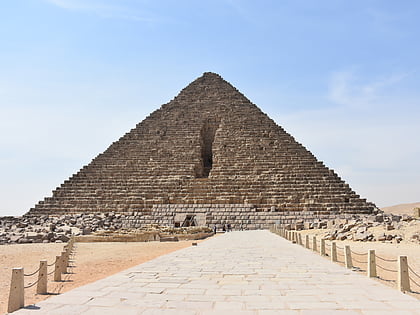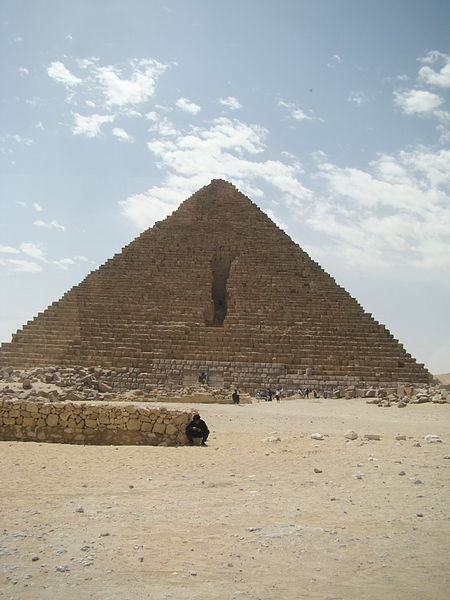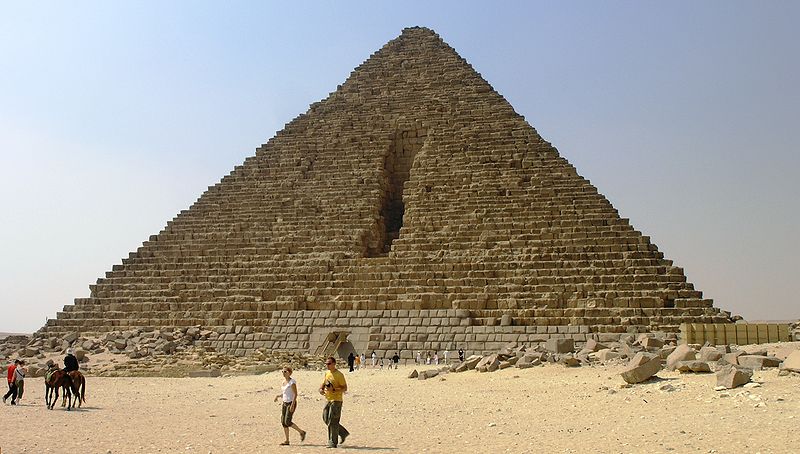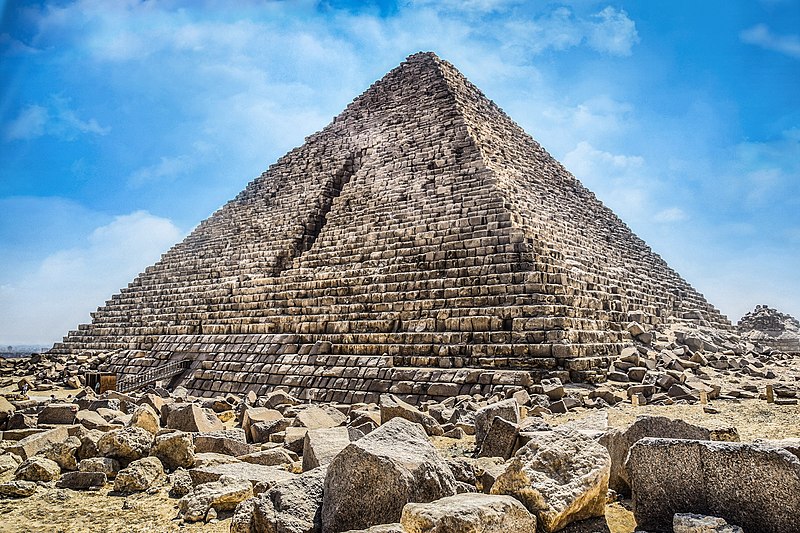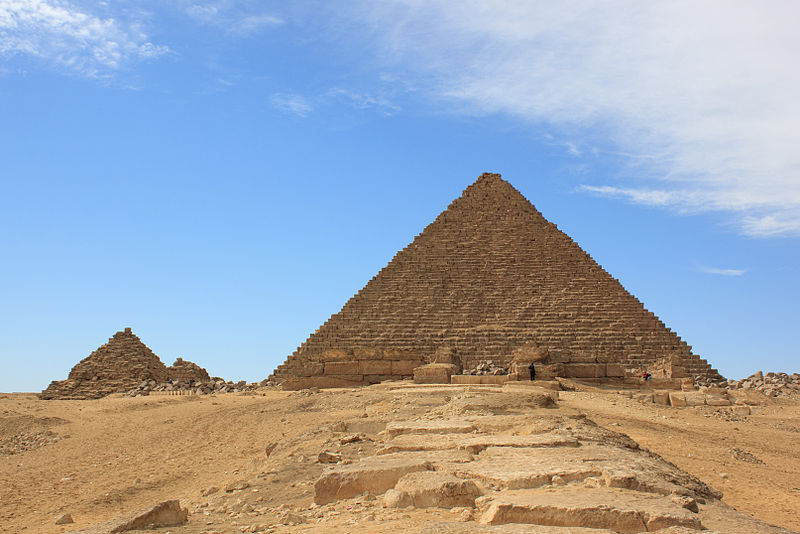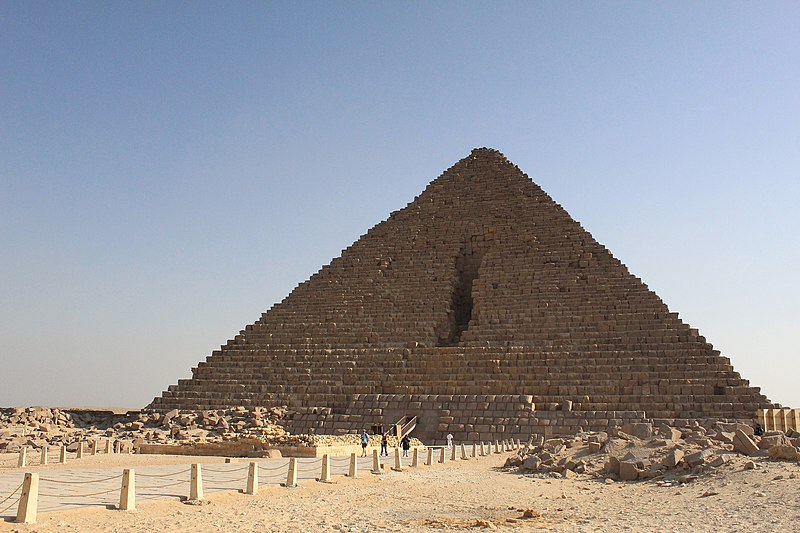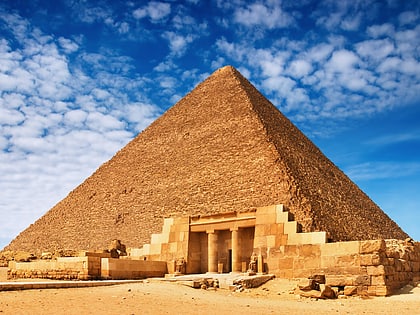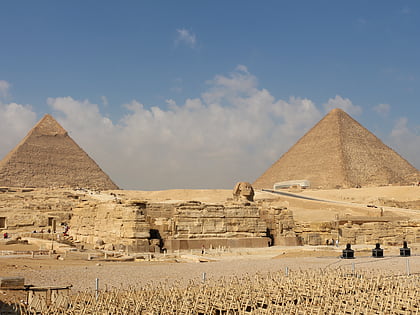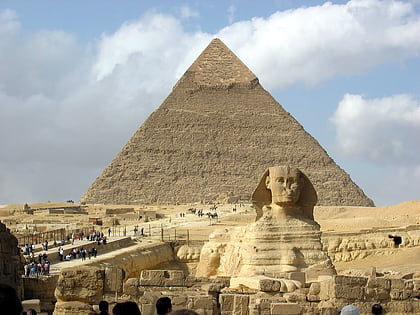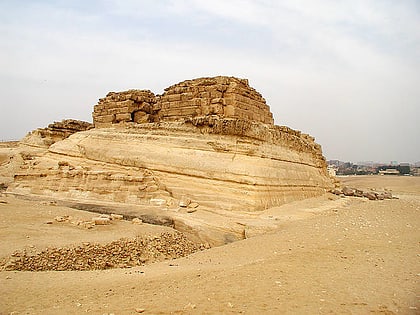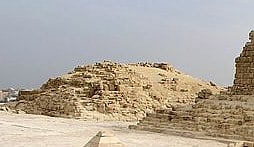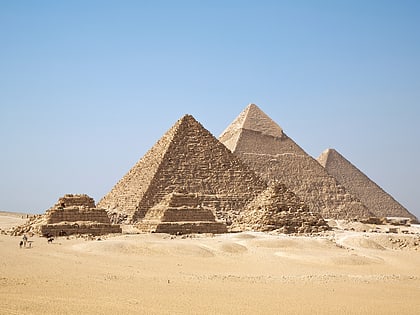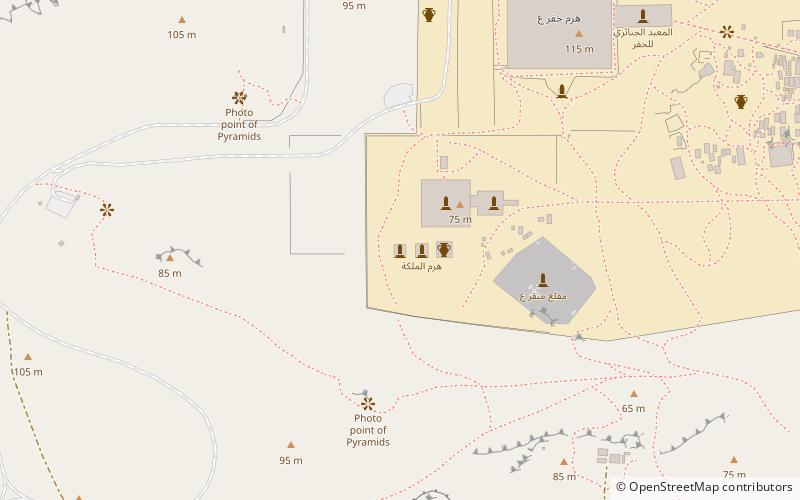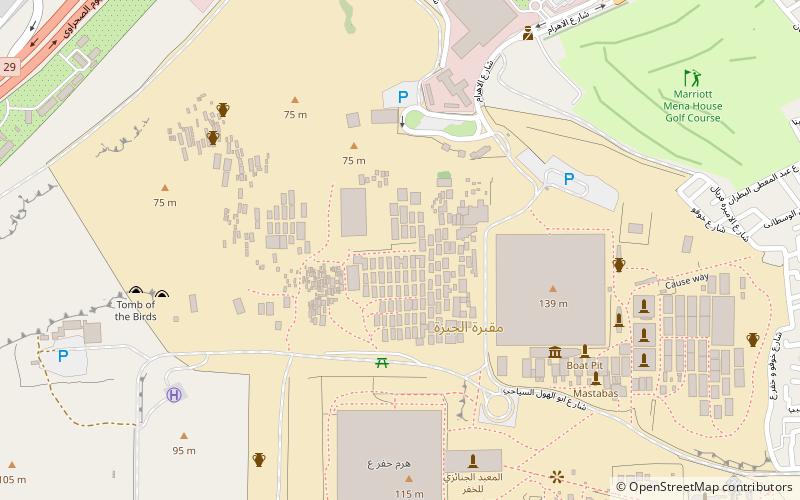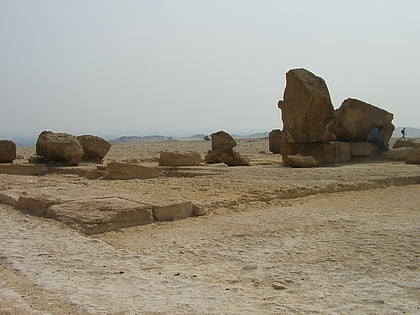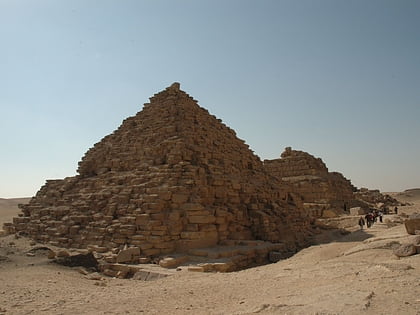Pyramid of Menkaure, Cairo
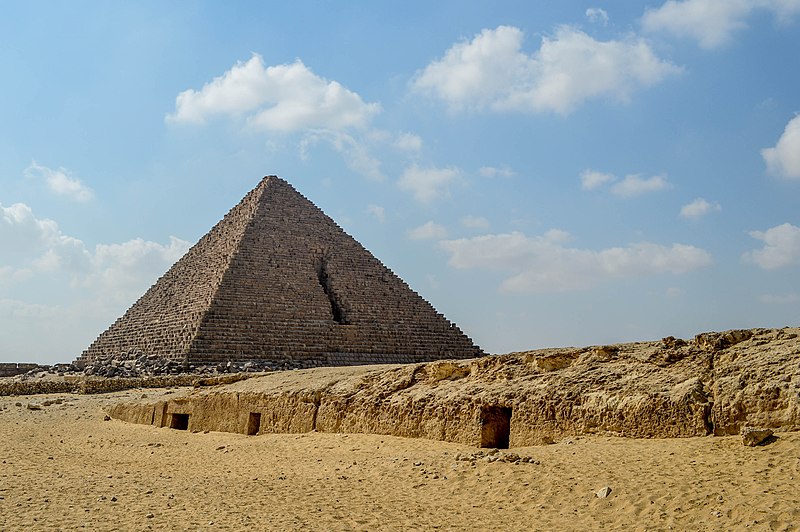
Facts and practical information
The Pyramid of Menkaure stands as an ancient testament to Egypt's grand history, situated on the Giza Plateau near Cairo. As the smallest of the three Great Pyramids of Giza, it was built as a tomb for Pharaoh Menkaure, who reigned during the Fourth Dynasty of the Old Kingdom, around 2500 BC. Despite its smaller size, with an original height of 65 meters, now reduced to 61 meters due to the loss of its outer casing and capstone, it remains a significant part of the iconic pyramid complex.
Constructed of limestone and granite, the Pyramid of Menkaure reflects the remarkable architectural skills of ancient Egyptians. Its complex also includes three subsidiary pyramids, often referred to as "queens' pyramids," and several mastabas, which are flat-roofed tombs with sloping sides.
The pyramid has been the subject of archaeological interest for centuries. In the 1830s, English army officer Richard William Howard Vyse used gunpowder to force an entrance into the pyramid. Inside, chambers with impressive granite walls and a sarcophagus were discovered, though the mummy of Menkaure was never found.
Visitors to the Pyramid of Menkaure can marvel at the precision of its construction and the sheer scale of the undertaking, despite it being the smallest of the Giza trio. The pyramid is open to the public, allowing tourists to explore the corridors and offering a glimpse into the ancient burial practices of Egypt.
Cairo
Pyramid of Menkaure – popular in the area (distance from the attraction)
Nearby attractions include: Great Pyramid of Giza, Giza pyramid complex, Pyramid of Khafre, Pyramid of Khentkaus I.
